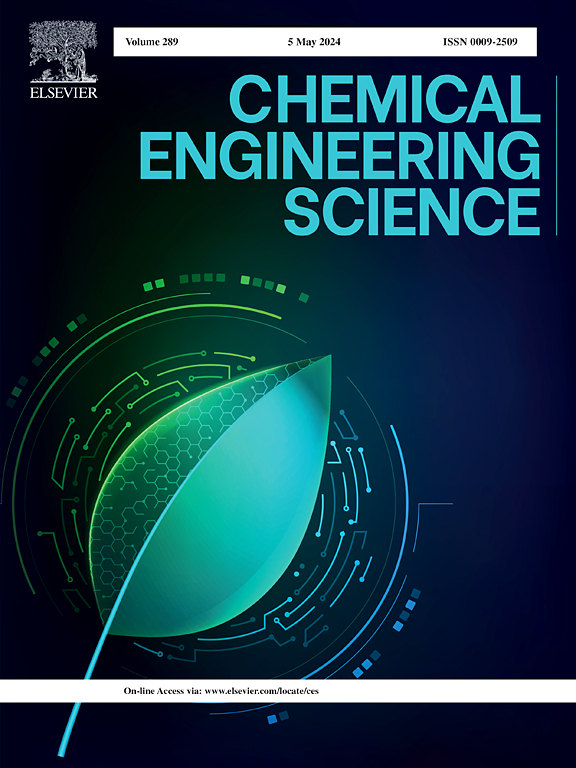超声协同氧化技术:从高硫含锗粉尘中浸出锗的动力学和机理
IF 4.1
2区 工程技术
Q2 ENGINEERING, CHEMICAL
引用次数: 0
摘要
针对目前高硫含锗粉尘两段硫酸浸出工艺中锗浸出效率低、浸出时间长等问题,本研究采用超声波辅助H2O2氧化浸出。浸出第一阶段引入超声波和H2O2,第二阶段引入超声波。分析表明,粉尘颗粒由内核和外壳组成,界面处的PbS是促进锗浸出的主要屏障。优化条件后,锗浸出率达到94.10%,比常规方法提高11.26%。在氧化浸出过程中,H2O2的固有氧化能力起主导作用。超声波的引入促进了H2O2的分解,产生更多的羟基自由基(OH•),增强了传质,细化了晶粒结构,破坏了Si-Ge共析出。动力学研究表明,锗浸出的第一阶段符合现象学模型,即快速溶解和缓慢扩散。超声波与H2O2结合使溶解活化能降低43.15%,扩散活化能降低22.88%。本研究致力于提出一种高效、环保的锗提取技术,实现锗资源的综合回收利用。本文章由计算机程序翻译,如有差异,请以英文原文为准。
Ultrasonic synergistic oxidation technology: Kinetics and mechanism of germanium leaching from high-sulfur germanium-bearing dust
To improve the low germanium leaching efficiency and lengthy leaching time in the current two-stage sulfuric acid leaching process for high-sulfur germanium-bearing dust, this study applies ultrasonic-assisted H2O2 oxidative leaching. Ultrasound and H2O2 are introduced in the first stage of leaching, while ultrasound is incorporated in the second stage. Analysis shows that the dust particles consist of an inner core and an outer shell, with PbS at the interface acting as the primary barrier to enhanced germanium leaching. After optimizing conditions, germanium leaching efficiency reached 94.10%, a 11.26% increase over conventional methods. During the oxidative leaching process, the intrinsic oxidizing capacity of H2O2 plays a dominant role. The introduction of ultrasound promotes the decomposition of H2O2, generating a greater quantity of hydroxyl radicals (OH•), enhancing mass transfer, refining the grain structure, and disrupting Si-Ge co-precipitation. Kinetic studies reveal that the first stage of germanium leaching conforms to the phenomenological model, involving rapid dissolution and slow diffusion. Ultrasound combined with H2O2 reduces dissolution activation energy by 43.15% and diffusion activation energy by 22.88%. This study is dedicated to proposing an efficient and environmentally friendly germanium extraction technology to achieve comprehensive recovery and utilization of germanium resources.
求助全文
通过发布文献求助,成功后即可免费获取论文全文。
去求助
来源期刊

Chemical Engineering Science
工程技术-工程:化工
CiteScore
7.50
自引率
8.50%
发文量
1025
审稿时长
50 days
期刊介绍:
Chemical engineering enables the transformation of natural resources and energy into useful products for society. It draws on and applies natural sciences, mathematics and economics, and has developed fundamental engineering science that underpins the discipline.
Chemical Engineering Science (CES) has been publishing papers on the fundamentals of chemical engineering since 1951. CES is the platform where the most significant advances in the discipline have ever since been published. Chemical Engineering Science has accompanied and sustained chemical engineering through its development into the vibrant and broad scientific discipline it is today.
 求助内容:
求助内容: 应助结果提醒方式:
应助结果提醒方式:


